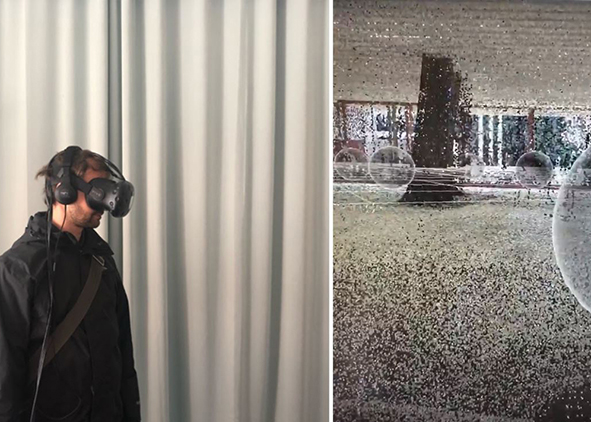Tre casi studio sulla conservazione virtuale. Applicare la realtà virtuale al Patrimonio Culturale
DOI:
https://doi.org/10.19229/2464-9309/6202019Parole chiave:
conservazione, sperimentale, realtà virtuale, conservazione virtuale, scansione 3DAbstract
Il presente articolo documenta tre casi studio che sperimentano tecniche di Conservazione Virtuale su Beni Culturali per la salvaguardia di aspetti ‘materiali’ che nel prossimo futuro possono essere compromessi irrimediabilmente dagli effetti prodotti dai cambiamenti climatici. Attraverso l’uso di scanner 3D, fotogrammetria e software di renderizzazione, lo studio documenta come le tecnologie emergenti possano essere usate congiuntamente per la restituzione virtuale su scala reale di Beni Culturali, da presentare in mostre digitali o per l’archiviazione documentale. Sebbene la Conservazione Virtuale richieda un sostanziale cambiamento di metodi e strumenti di lavoro, il contributo sostiene che il realismo ottenuto possa compensare l’eventuale perdita della materia del Bene e consentire comunque alle generazioni future la fruizione del Patrimonio Culturale. L’articolo conclude illustrando i limiti e i punti di forza dello studio e auspicando che la Conservazione Virtuale possa aiutare i tecnici nella definizione di linee guida che integrino la realtà virtuale nella pratica tradizionale.
Downloads
##plugins.generic.articleMetricsGraph.articlePageHeading##
Riferimenti bibliografici
Aubrey, D. (2013), Theories of Architectural Conservation – A Guest Post by Douglas Read. [Online] Available at: vialucispress.wordpress.com/2013/02/01/theories-of-architectural-conservation-a-guest-post-by-douglas-read/ [Accessed 25 October 2019].
Barford, W. (ed.) (2017), Fundamentals of Wearable Computers and Augmented Reality, 2nd edition, CRC Press, Boca Raton (USA).
Bratton, B. H. (2016), The Stack – On Software and Sovereignty, MIT Press, Cambridge (MA).
Buthke, J., Larsen, N. M., Pedersen, S. O. and Bundgaard, C. (2020), “Adaptive Reuse of Architectural Heritage”, in Gengnagel, C., Baverel, O., Burry, J., Ramsgaard Thomsen, M. and Weinzierl, S. (eds), Impact – Design with All Senses. DMSB 2019, Springer, Cham, pp. 59-68. [Online] Available at: doi.org/10.1007/978-3-030-29829-6_5 [Accessed 30 October 2019].
Colette, A. (ed.) (2007), Climate Change and World Heritage – Report on predicting and managing the impacts of climate change on World Heritage and Strategy to assist States Parties to implement appropriate management responses, Report 22, UNESCO World Heritage Centre. [Online] Available at: whc.unesco.org/document/8874 [Accessed 3 November 2019].
de Lange, M. and de Waal, M. (eds) (2019), The Hackable City – Digital Media and Collaborative City-Making in the Network Society, Springer, Singapore. [Online] Available at: link.springer.com/book/10.1007/978-981-13-2694-3 [Accessed 3rd November 2019].
EAAE – European Association of Architectural Education (2012), EAAE Charter on Architectural Research. [Online] Available at: www.eaae.be/about/statutes-and-charter/eaae-charter-architectural-research/ [Accessed 20 October 2019].
Graham, J., Blanchfield, C., Anderson, A., Carver, J. and Moore, J. (eds) (2016), Climates – Architecture and the Planetary Imaginary, Lars Müller Publishers, Baden.
Gruber, S. (2011), “The Impact of Climate Change on Cultural Heritage Sites: Environmental Law and Adaptation”, in Carbon and Climate Law Review, vol. 5, issue 2, pp. 209-219. [Online] Available at: doi.org/10.21552/CCLR/2011/2/181 [Accessed 20 October 2019].
Negussie, E. (ed.) (2012), Changing World, Changing Views of Heritage: heritage and social change – Proceedings of the ICOMOS Scientific Symposium, 30 October 2010, Dublin, Ireland. [Online] Available at: www.icomos.org/images/DOCUMENTS/ADCOM/ICOMOS_Scientific_ Symposium_DUBLIN_2010.pdf [Accessed 10 September 2019].
Otero-Pailos, J., Fenstad Langdalen, E. and Arrhenius, T. (eds) (2016), Experimental Preservation, Lars Müller Publishers, Baden.
Picon, A. (2015), Smart Cities – A Spatialised Intelligence, Wiley, Hoboken.
Sesana, E., Gagnon, A. S., Bertolin, C. and Hughes, J. (2018), “Adapting Cultural Heritage to Climate Change Risks: Perspectives of Cultural Heritage Experts in Europe”, in Geosciences, vol. 8, issue 8, pp. 1-23. [Online] Available at: doi.org/10.3390/geosciences8080305 [Accessed 10 September 2019].
Sposito, C. and Scalisi, F. (2018), “Processo conservativo e significatività. Un approccio metodologico per la progettazione dei sistemi di protezione nei siti archeologici | Conservation process and significance. A methodological approach to plan shelters in archaeological sites”, in Agathón | International Journal of Architecture, Art and Design, vol. 4, pp. 45-58. [Online] Available at: doi.org/10.19229/2464-9309/462018 [Accessed 19 November 2019].

##submission.downloads##
Pubblicato
Come citare
Fascicolo
Sezione
Licenza
AGATHÓN è pubblicata sotto la licenza Creative Commons Attribution License 4.0 (CC-BY).
License scheme | Legal code
Questa licenza consente a chiunque di:
Condividere: riprodurre, distribuire, comunicare al pubblico, esporre in pubblico, rappresentare, eseguire e recitare questo materiale con qualsiasi mezzo e formato.
Modificare: remixare, trasformare il materiale e basarti su di esso per le tue opere per qualsiasi fine, anche commerciale.
Alle seguenti condizioni
Attribuzione: si deve riconoscere una menzione di paternità adeguata, fornire un link alla licenza e indicare se sono state effettuate delle modifiche; si può fare ciò in qualsiasi maniera ragionevole possibile, ma non con modalità tali da suggerire che il licenziante avalli l'utilizzatore o l'utilizzo del suo materiale.
Divieto di restrizioni aggiuntive: non si possono applicare termini legali o misure tecnologiche che impongano ad altri soggetti dei vincoli giuridici su quanto la licenza consente di fare.
Note
Non si è tenuti a rispettare i termini della licenza per quelle componenti del materiale che siano in pubblico dominio o nei casi in cui il nuovo utilizzo sia consentito da una eccezione o limitazione prevista dalla legge.
Non sono fornite garanzie. La licenza può non conferire tutte le autorizzazioni necessarie per l'utilizzo che ci si prefigge. Ad esempio, diritti di terzi come i diritti all'immagine, alla riservatezza e i diritti morali potrebbero restringere gli usi del materiale.


















































































